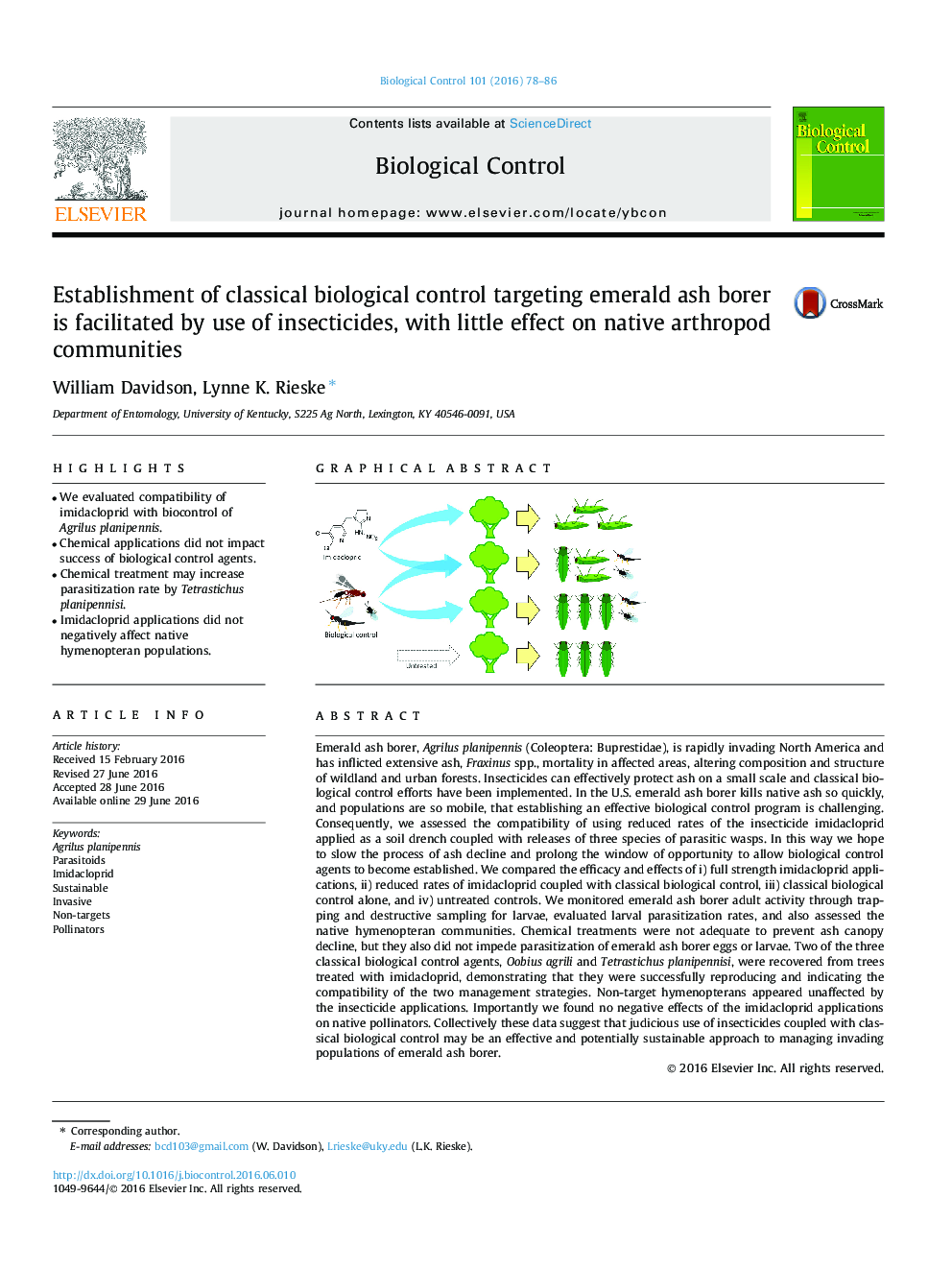| کد مقاله | کد نشریه | سال انتشار | مقاله انگلیسی | نسخه تمام متن |
|---|---|---|---|---|
| 4503607 | 1624233 | 2016 | 9 صفحه PDF | دانلود رایگان |
• We evaluated compatibility of imidacloprid with biocontrol of Agrilus planipennis.
• Chemical applications did not impact success of biological control agents.
• Chemical treatment may increase parasitization rate by Tetrastichus planipennisi.
• Imidacloprid applications did not negatively affect native hymenopteran populations.
Emerald ash borer, Agrilus planipennis (Coleoptera: Buprestidae), is rapidly invading North America and has inflicted extensive ash, Fraxinus spp., mortality in affected areas, altering composition and structure of wildland and urban forests. Insecticides can effectively protect ash on a small scale and classical biological control efforts have been implemented. In the U.S. emerald ash borer kills native ash so quickly, and populations are so mobile, that establishing an effective biological control program is challenging. Consequently, we assessed the compatibility of using reduced rates of the insecticide imidacloprid applied as a soil drench coupled with releases of three species of parasitic wasps. In this way we hope to slow the process of ash decline and prolong the window of opportunity to allow biological control agents to become established. We compared the efficacy and effects of i) full strength imidacloprid applications, ii) reduced rates of imidacloprid coupled with classical biological control, iii) classical biological control alone, and iv) untreated controls. We monitored emerald ash borer adult activity through trapping and destructive sampling for larvae, evaluated larval parasitization rates, and also assessed the native hymenopteran communities. Chemical treatments were not adequate to prevent ash canopy decline, but they also did not impede parasitization of emerald ash borer eggs or larvae. Two of the three classical biological control agents, Oobius agrili and Tetrastichus planipennisi, were recovered from trees treated with imidacloprid, demonstrating that they were successfully reproducing and indicating the compatibility of the two management strategies. Non-target hymenopterans appeared unaffected by the insecticide applications. Importantly we found no negative effects of the imidacloprid applications on native pollinators. Collectively these data suggest that judicious use of insecticides coupled with classical biological control may be an effective and potentially sustainable approach to managing invading populations of emerald ash borer.
Figure optionsDownload as PowerPoint slide
Journal: Biological Control - Volume 101, October 2016, Pages 78–86
